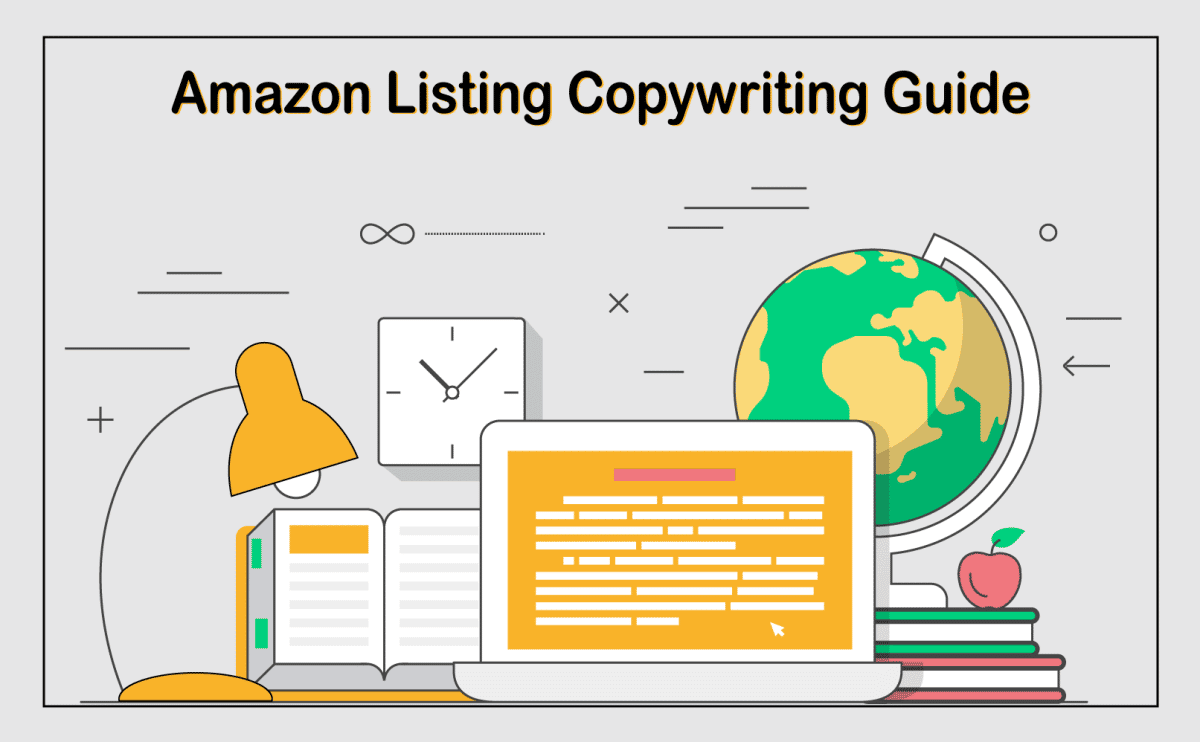Copywriting is the easiest way to improve your Amazon sales, elevate your conversion rates, boost your Best Sellers rank in the Amazon search algorithm, and rake in more profit.
However, creating copy for your listing is easier said than done.
It’s not just about mindlessly enumerating the features of your product, mentioning its specs, or simply creating big blocks of text for potential customers to read.
You want to create engaging and informative copy that connects with your customer’s emotions, pushing them to make the purchase after going through your product listing.
My team and I have written over 12000 Amazon product listings!
So if you need help creating high-converting copy that will kick your competitor’s ass big time, you’re at the right place, and I’m here to show you how it’s done!
Let’s begin.
What Is Amazon Copywriting?
Simply put, Amazon copywriting is the text you use on your Amazon marketplace product listings.
These include the product title, product descriptions, bullet points, and image captions (all of which may be filled out through Seller Central).
Your listing’s copy should focus mainly on how your product solves a customer’s problems.
It should also directly influence customers on understanding the value that your product adds to their life.
When a customer types in an item on the Amazon search bar, you want your product to show up right on the first search page.
To achieve this, your listing has to be SEO-optimized with relevant Amazon keywords to help it rank high on Amazon’s search results.
Here’s a full guide on how to optimize your product listing.
Benefits Of Effective Copywriting For Amazon Products

Using the right keywords and optimizing your Amazon listing significantly boosts traffic to your products and leads to increased conversions.
Effective copywriting not just allows your products to be found in the first page of Amazon search results, but also encourages customers to purchase your products.
Keep in mind that it only takes a few seconds to hook up or drive away a customer – it all depends on how you use relevant keywords for building your product listing.
How To Copywrite For Amazon & What’s Important
1. Deeply Understand Your Audience
Before you even tinker with Seller Central, research keywords, or start creating copy, take a moment to think about the target audience of your specific product
Identifying your product’s key buyer is essential if you are looking to achieve success on Amazon.
If you are selling a dog harness, your primary target audience would be dog owners who have trouble walking their dogs using a regular collar.
Show them that you understand how hard it is to walk a dog that keeps pulling and tugging at the leash – then let them know that your dog harness instantly solves that problem.
This way, you immediately connect and build trust with the customer.
2. Keyword Rich Titles

After identifying your target audience, it’s time to start working on your listing, beginning with the title.
The Product Title is one of the first things potential buyers see as they browse on Amazon and click on your product listing.
Search engines like Google use algorithms to deliver the best possible results for a query.
Amazon’s search engine also uses an Amazon search algorithm to present the most relevant product pages for a certain query.
Avoid keyword stuffing, or inserting large numbers of keywords to increase your page’s visibility. This can actually penalize your listing.
For the title, you are given a maximum of 200 bytes to work with (some categories allow less than that).
Start with your brand name, and follow it up with a relevant primary keyword phrase – basically keywords that tell costumers what your product is (using the example mentioned earlier, “dog harness” would be your primary keyword phrase).
Insert important keywords with a high search volume. These should also further describe the product, such as its dimensions, what it is made of, its key features, and its quantity.
Just remember to make the most out of the 200-byte limit and create a title that makes sense for prospective buyers.
There are a variety of keyword research tools available online such as Cerebro to help you with optimizing your Amazon product descriptions.
Here’s a full guide on how to craft the perfect amazon title.
3. Key Product Features (Bullet Points)

Another essential part of an Amazon listing is the bullet points section, which is meant to highlight your product features and benefits.
The bullet points appear below the product title and are an excellent opportunity for you to keep customers engaged from start to finish.
The ecommerce giant, Amazon, allows you to write up to 5 bullet points for listings. Ideally, each bullet point should have around 200 to 250 bytes, including spaces.
Make sure to write about 1 key benefit in 1 bullet point, and try to be as descriptive as possible, given the limited space you have.
Also, the first bullet point should be the most important benefit of your product, and let the rest follow.
The bullet points are also great opportunities for inserting keywords to your listing.
Here’s a full guide just for the bullet points!
4. Talk About The Benefits Of The Product

When creating persuasive copy for your listings, keep in mind that customers buy benefits, not features.
Many sellers get carried away in creating copy for their listing – focusing too much on the product’s features, dimensions, materials, or composition.
This can bore your customers, making them lose interest and pushing them away to check out your competitor’s listings instead.
Features answer the question, “What Is It?”. While Benefits answer the question, “How Will This Make My Life Easier?”.
5. Sell A Cure, Not A Preventive Measure
Think about this: If there were 2 magic pills available; 1 that would PREVENT a certain disease from occurring later in life, and 1 that would CURE that disease, which do you think will sell better?
Customers would most likely pick the one that would CURE the disease if they do get sick, right?
The same analogy goes with selling products online.
Create a product description that shows customers that your product is the complete and instant solution to their problem – not just something that would address a future dilemma.
6. Using Precise Words and CTAs
The goal of your copy is to convince a customer to purchase your product.
Aside from featuring your product’s benefits, your copy should also have CTA (Call-To-Action) sentences to remind your customer to make the purchase decision.
An example of a good CTA would be, “Forget about endless tugging and pulling while you walk your dog. Add this Dog Harness to your cart TODAY!”.
7. Create A Sense Of Urgency

Customers often take time or hesitate before they make a purchase decision.
How do you get them to take action quickly? Create a sense of urgency in your copy!
Write down some potential issues that may take place in the long run if the customer doesn’t buy your product. Still using the dog harness example mentioned earlier, you might want to write something like:
“Without a dog harness, your dog could end up tugging and pulling harder on the leash every time you go on walks. This could hurt you or your dog in the long run.”
By creating a sense of urgency, you gently pressure the customer to make the purchase RIGHT NOW and enjoy its benefits RIGHT AWAY.
8. Taking Breaks Frequently
When someone places an enormous plate of food in front of you, you probably feel exhausted and full just by looking at it.
The same goes with product descriptions that just look like a big block of text.
Nowadays, most customers prefer to skim through a listing, instead of reading through consecutive lines of lengthy sentences.
To keep potential customers hooked in to your product description, make sure to break your copy into digestible chunks that are pleasant to look at.
Separate ideas into different paragraphs and make sure there is white space between them.
Add line breaks after your paragraphs, which, ideally, should be composed of 3 to 4 sentences.
9. Mimic Targeted Customer’s Language

Create a connection between your customers and your brand.
You can do this by using the same terms and phrases in their concerns to create your Amazon product descriptions.
Read through customer questions and reviews on and off Amazon, or even on Google, and make a note of the most common terms you see there.
You can compile all these words into a keyword list or word cloud, and include this terminology in your title, bullets, product descriptions, or search terms.
This can help you identify the right keywords and keyword phrases that you might have missed in your keyword research.
10. Integrate Customer Queries

Answering your customer’s pressing questions is crucial for success in any e Commerce business.
To gain more insight on what your customers’ most common queries are, you can check out product reviews, questions, or comments on competitor listings.
If you notice a certain question being asked by customers more frequently than others, this should be directly answered and addressed in your bullet points or product description.
11. Split Testing Your Content

Fine-tuning your copy is the only way to achieve the perfect Amazon product description.
You can do this by regularly making slight adjustments to your product’s image, title, bullet points, keywords, and search terms, and seeing how customers respond.
Try to scout established competitor pages to see what makes them rank high on Amazon’s search results.
Apply those to your own Amazon listings and create different variations every now and then to see if they help boost your conversion rate and lead to more sales.
FAQ – Frequently Asked Questions
Is It Necessary To Use Good Copywriting For Amazon Products?
No matter how good your product is, you’ll have a hard time selling it if your listing isn’t well-constructed and fully optimized.
If you are launching a product on Amazon, writing persuasive copy plays a significant role in helping boost your sales numbers and improve your conversion rate.
Make sure to carry out intensive keyword research so you can incorporate relevant keywords and important keyword phrases into your product pages.
You should also have an effective Amazon SEO strategy in place so that your product always shows up high on Amazon search engine results.
Who Needs Amazon Copywriting?
Any Amazon seller, whether a beginner or a seasoned one, needs copywriting for their product listings.
Since you are selling your products online, the only way a customer can get to know more about your item is through its Amazon listing, which contains the title, bullet points, and the product description that talks about product details and product benefits.
Final Thoughts
Writing copy for your Amazon copy can be a challenging task. But with the right guide, this can be done with ease.
I hope this article has given you a clearer idea on Amazon copywriting and why it is important for helping increase your sales.
After creating an engaging Amazon product description, read our Amazon Listing Optimization Guide to find out how to do keyword research and using the right keywords to push your listing to the top of the search results.




